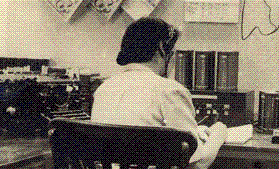Asia-Pacific Region Intelligence Center
North Korea's missile programme 본문
North Korea's missile programme
CIA Bear 허관(許灌) 2009. 3. 8. 14:23
|
| |
|
North Korea is believed to have more than 800 ballistic missiles, including long-range missiles which could one day strike the US. The BBC looks at Pyongyang's missile programme, which has mainly been developed from the Scud missile. North Korea first obtained tactical missiles from the Soviet Union as early as 1969, but its first Scuds reportedly came via Egypt in 1976. Egypt is believed to have supplied North Korea with Scud-B missiles and designs in return for its support against Israel in the Yom Kippur War. By 1984, North Korea was building its own Scud-Bs and developed two new versions, the Scud-C and Scud-D. It has since developed a medium-range missile, the Nodong, and a long-range missile based on Scud technology, the Taepodong. In July 2006 it test-fired a modification to the Taepodong, called the Taepodong-2, which experts say could have a range of up to 6,000km (3,500 miles). The missile failed shortly after launch.

SHORT-RANGE MISSILES
North Korea has a variety of short-range missiles. The KN-02 is thought to be the most accurate, but its range - around 100 km - is the shortest. The Scud-B and C have ranges of 300 and 500 km respectively, while the Scud-D is believed to have a range of 700 km. It is thought that these missiles could deliver conventional warheads. The Scud-B, C and D have all been tested and deployed. These missiles would enable North Korea to strike any area in South Korea. The KN-02 missile, currently in the testing stage, could be aimed at key targets in South Korea such as military installations south of the border.
NODONG MISSILE
The Nodong missile is thought to have a range of around 1,000 km and could potentially carry a nuclear warhead. But it is not accurate. A March 2006 report by the US Center for Non-proliferation Studies said it had a circular error probable of 2-4 km, meaning that half of the missiles fired would fall outside a circle of that radius. The Nodong could strike most of Japan but not with any accuracy. If it were fired on a military target, its inaccuracy could lead to high levels of civilian casualties. The missile was test fired in May 1993.
TAEPODONG-1 MISSILE
The Taepodong-1 is a two-stage missile comprising Nodong and Scud parts and can reach a distance of 2,200km, but it is said to be even less accurate than the Nodong. North Korea tested a Taepodong-1 in August 1998, firing a missile over northern Japan. It brings US bases on Okinawa within North Korea's reach. But the missile must be fired from a fixed location and has a long preparation time, meaning that potential launches could be detected. A land-based missile, the Taepodong-X, is also said to be under development but has not yet been tested. Based on a Soviet submarine-launched ballistic missile, it is thought to have a range of up to 4,000 km, reaching US bases on Guam. Unlike the Taepodong-1, it could be fired from mobile launch systems hidden from view.
TAEPODONG-2 MISSILE
The Taepodong-2 long-range missile is estimated to have a range of between 5,000 and 6,000 km, putting Alaska, Hawaii and parts of the west coast of the US within range. But the first launch of the missile, in July 2006, appeared to be a failure after it crashed within seconds of launch - according to US sources. If the missile was successfully launched, it is not thought to be particularly accurate or to be able to carry a large warhead. Like the Taepodong-1, it requires a fixed launch site. The Taepodong-2 test took place from the Musudan-ri complex on the East coast of the Korean peninsula. Analysis of satellite images of the area appear to show a range of missile fabrication, fuelling, testing and control facilities.
 http://news.bbc.co.uk/2/hi/asia-pacific/2564241.stm | |
'Guide Ear&Bird's Eye8 > 북한군 대량살상무기 동향 자료' 카테고리의 다른 글
| 북한의 미사일 개발 발자취(NHK) (0) | 2009.04.05 |
|---|---|
| 인공위성과 탄도미사일은 '동전의 양면' (0) | 2009.04.05 |
| 지상배치형 요격 미사일 'PAC3' 장비를 실은 화물선(일본사진) (0) | 2009.04.02 |
| ICBM-우주발사체 공통점과 차이점 (0) | 2009.03.16 |
| 싱가포르, 북한 로켓 수출 실태규명 착수 (0) | 2008.04.04 |



